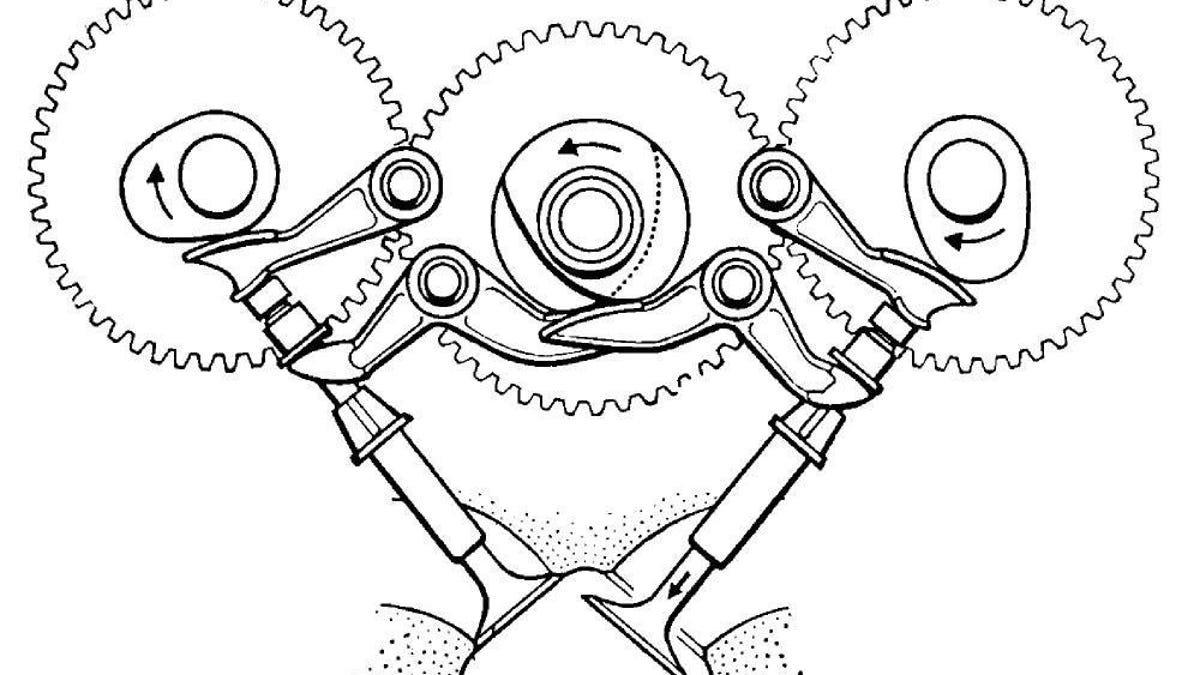So what exactly is 'Desmo' and why is it so cool?
Desmodromic valves are mostly a thing of the past, but one Italian motorcycle company continues to soldier on with the technology, and we're curious why.

If you're a motorcycle geek, then you're probably aware that Ducati engines all use something called "Desmo," but you might not understand why they use it or what it even is. Thankfully, we're here to help.
Desmo is short for desmodromic, and it refers to the way that a poppet valve inside of an engine is controlled. In almost every four-stroke piston engine, the valves are opened via a camshaft and closed by spring pressure which comes from a valve spring. It's a well-known system, it works, and it's pretty simple. That's why it's the dominant system in place today, even in high-strung race cars and bikes, but that wasn't always the case.
The first mention of desmodromic valves comes from several 1896 patents by Gustav Mees, but it wasn't until around the 1910 mark that they were used with any real success in a marine engine that thanks to desmo, dual magnetos and dual overhead valves (itself something of a rarity in that time) was able to produce 300 horsepower.
Mercedes-Benz , in the 1950s, began to utilize desmo in its straight-8 cylinder racing engines, most notably in the 300SLR racing cars that dominated events like the Mille Miglia and the W196 Formula 1 car. These engines were also used in two famous 300SLR coupes also known as the Uhlenhaut coupes. When coupled with Mercedes-Benz's advanced understanding of fuel injection, these racing engines proved to be extremely powerful and reliable.
The famed 300SLR race car used a fuel-injected 3.0-liter straight-8 engine with desmodromic valves.
The appeal of desmodromic valve actuation during this time mainly came from the propensity of valve springs to snap or float at higher rpms which often lead to catastrophic engine failure. This was primarily due to imperfect metallurgy and machining techniques.
Desmodromic valves get around these problems by using a second set of rocker arms and cam lobes to shut the valves directly. This means that regardless of engine rpm, the opportunity for valve float is eliminated. It's not all sunshine and roses in desmo land, however. The additional machining and parts required for the system add cost, and the valve adjustment process is twice as complicated as it would be in a standard engine. These factors have led desmo almost entirely to fall out of favor with manufacturers.
The only manufacturer soldiering on with the technology now is Ducati, which began using it at the behest of their famed engine designer, Fabio Taglioni in the company's 125cc grand prix motorcycle. The technology was so successful that it led to a string of victories, and became ingrained in the image of Ducati, even to this day. Every Ducati uses the technology, from their cheapest Scrambler models to the cataclysmically expensive factory MotoGP bikes.
Is it necessary now? Not really. Is it cool? In the words of the famous Robert Evans, "You bet your ass it is." So, now you know what Desmo is and how it works. Does it make you want to go an hop on a Ducati and go for a rip? It definitely does for us, so if you'll just excuse us...

